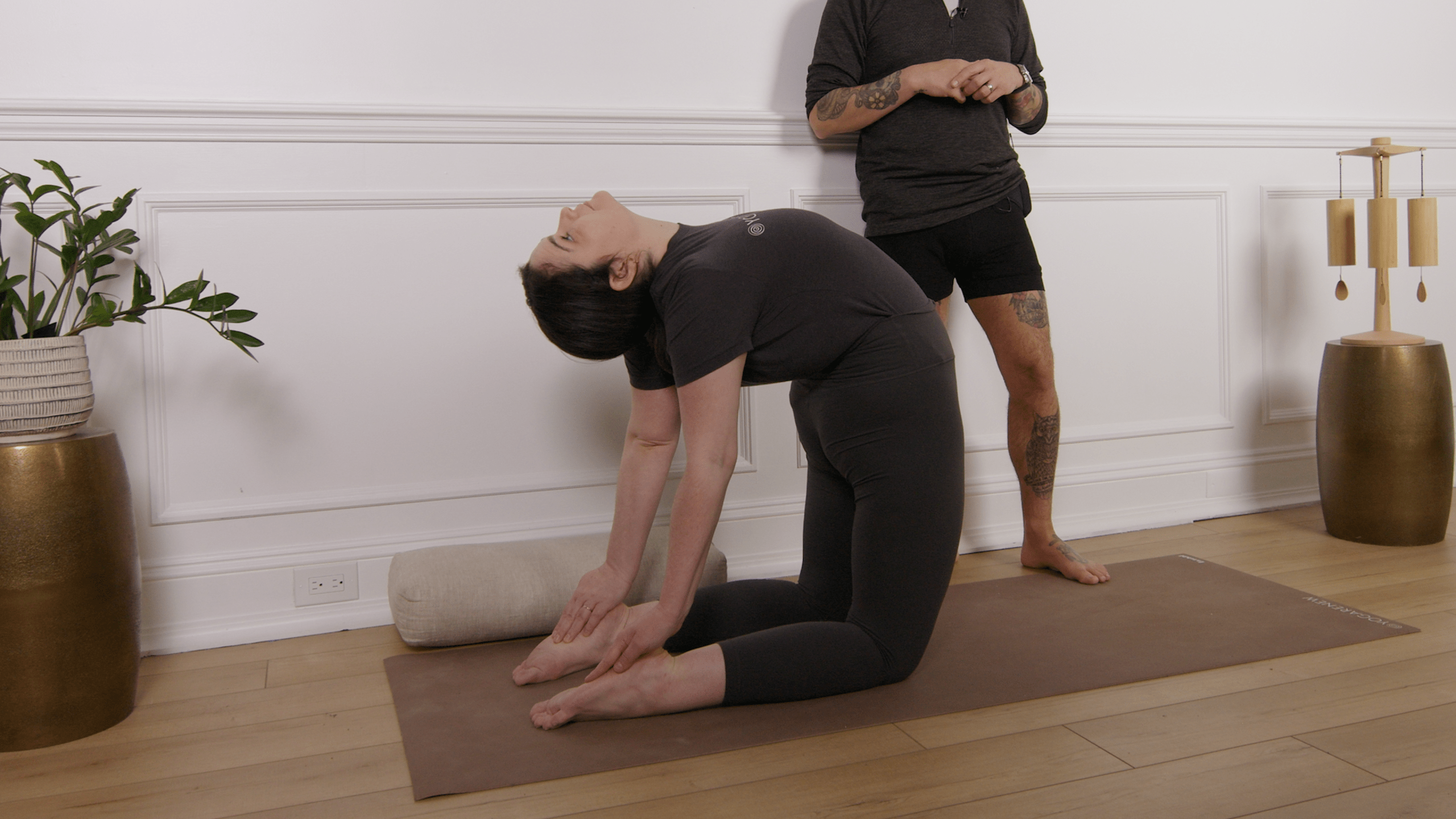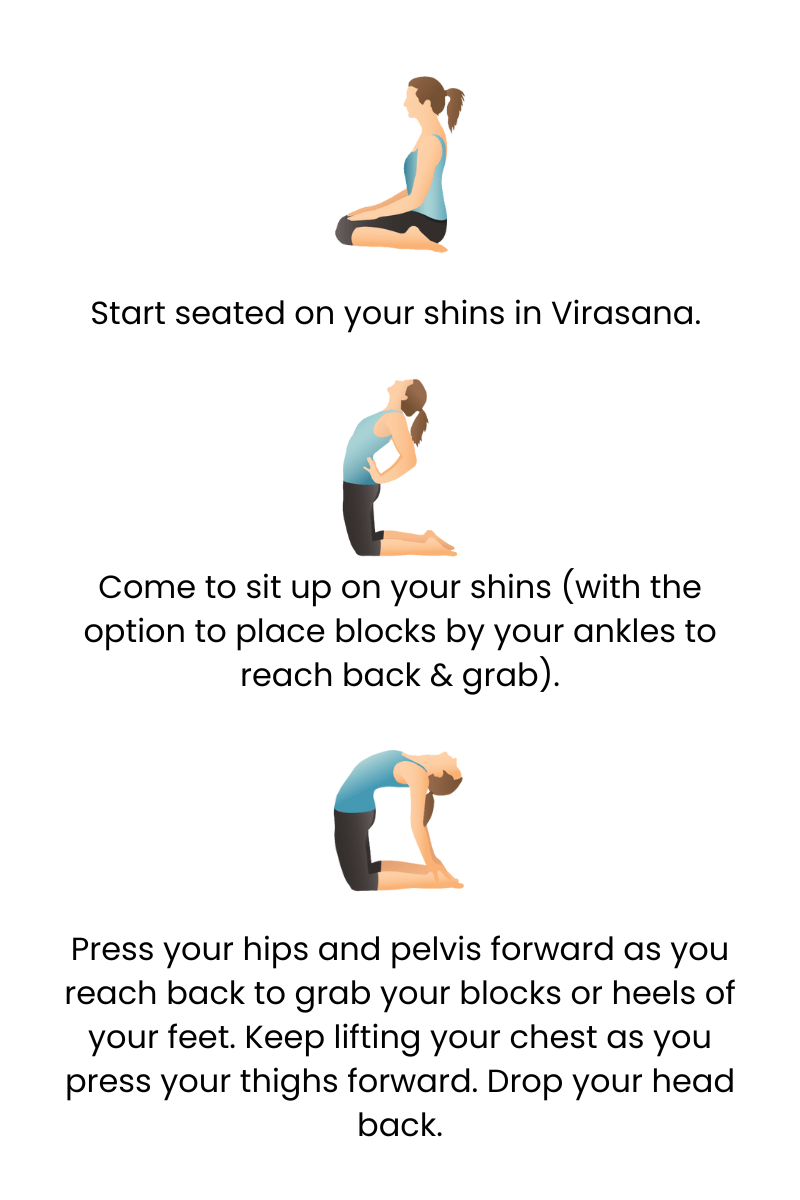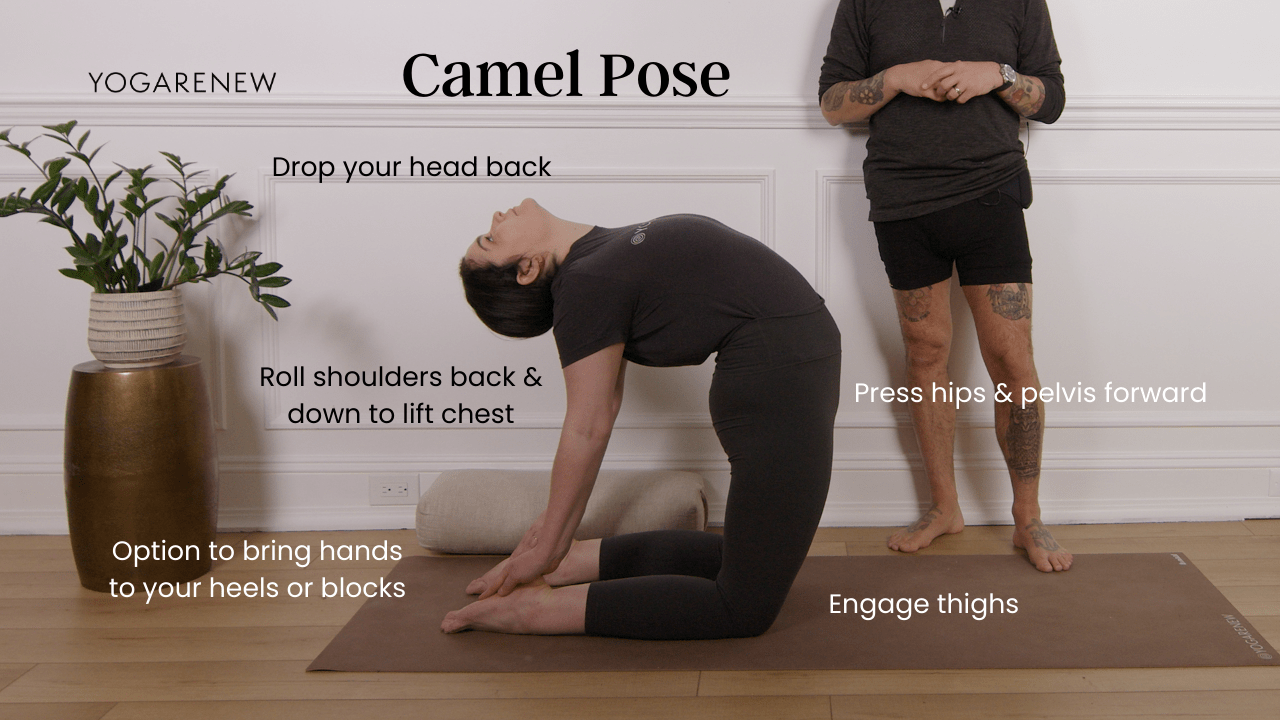What is Camel Pose?
English Name: Camel Pose
Sanskrit Name: Ustrasana (pronounced oosh-TRAHS-uh-nuh)
Category: Backbend, Heart Opener, Beginner

English Name: Camel Pose
Sanskrit Name: Ustrasana (pronounced oosh-TRAHS-uh-nuh)
Category: Backbend, Heart Opener, Beginner
Camel Pose, or Ustrasana, is a powerful backbend that opens the chest, stretches the hip flexors, and strengthens the spine. Performed in a kneeling position, this energizing posture invites deep heart opening and stimulates the nervous system. It is both grounding and expansive, offering physical challenge and emotional release.
A signature pose in many yoga styles—from Vinyasa to Hatha—Camel Pose can be adapted for various levels. Whether you’re cultivating courage, increasing flexibility, or counteracting forward posture, Ustrasana brings clarity, strength, and spaciousness to body and mind.


Camel Pose is a deeply energizing posture that opens the entire front body and invites emotional resilience. It helps to break habitual slouching patterns, increases spinal mobility, and strengthens postural muscles. Ustrasana is not just a physical shape—it’s a symbolic heart opener that encourages courage, presence, and connection.
Whether you’re preparing for deeper backbends or seeking a bold shift in energy, Camel Pose offers transformation from the inside out.
Yes, with modifications. Beginners can keep their hands on the lower back or use blocks instead of reaching for the heels.
That’s common. Camel can stir both physical and emotional energy. Come out slowly, rest in Child’s Pose, and breathe deeply.
Focus on lengthening the spine before backbending. Engage your thighs, lift your chest, and only go as far as you can breathe comfortably.
Either is fine! Tucking the toes brings the heels closer and can make the pose more accessible.
As a heart opener, Ustrasana can activate stored emotions. Stay grounded, breathe deeply, and listen to your body.
Your New Favorite Yoga App. For Free.